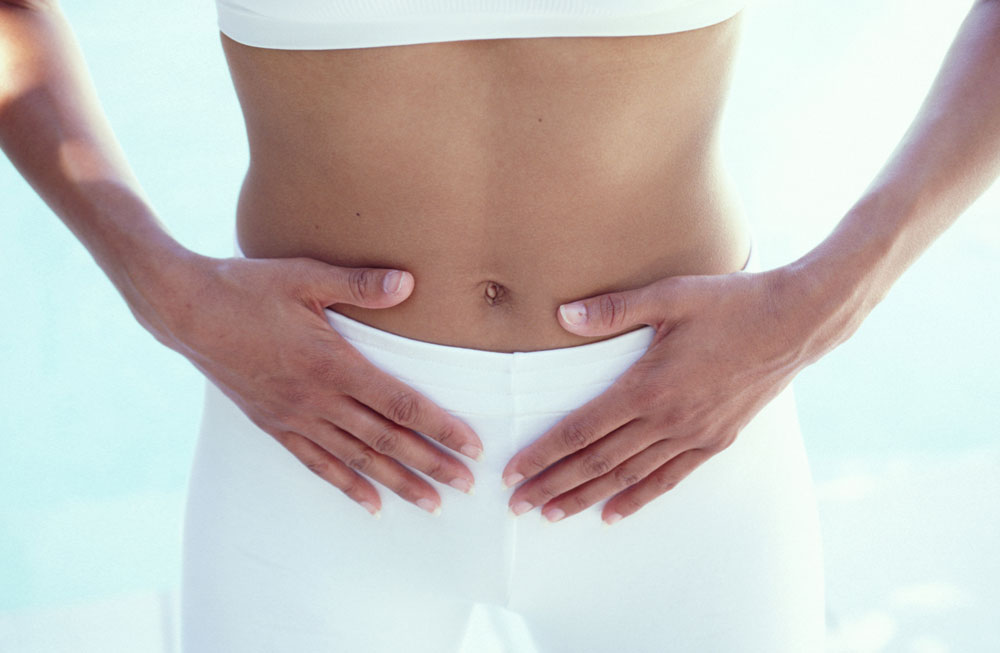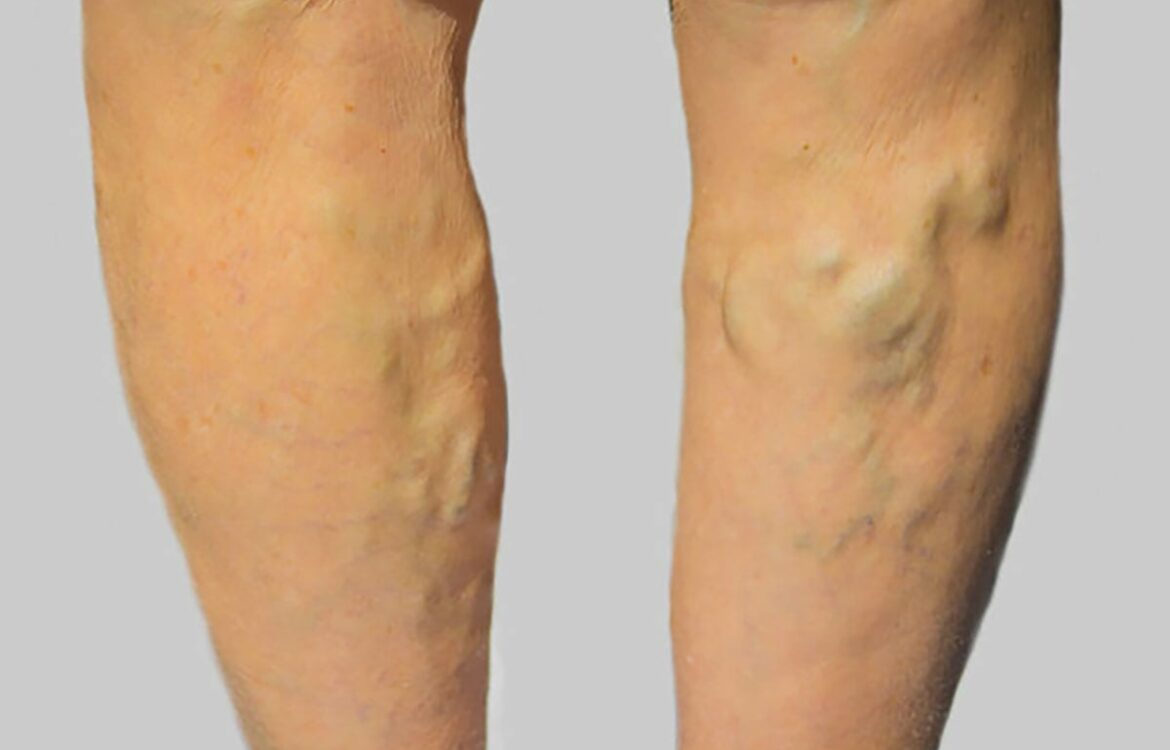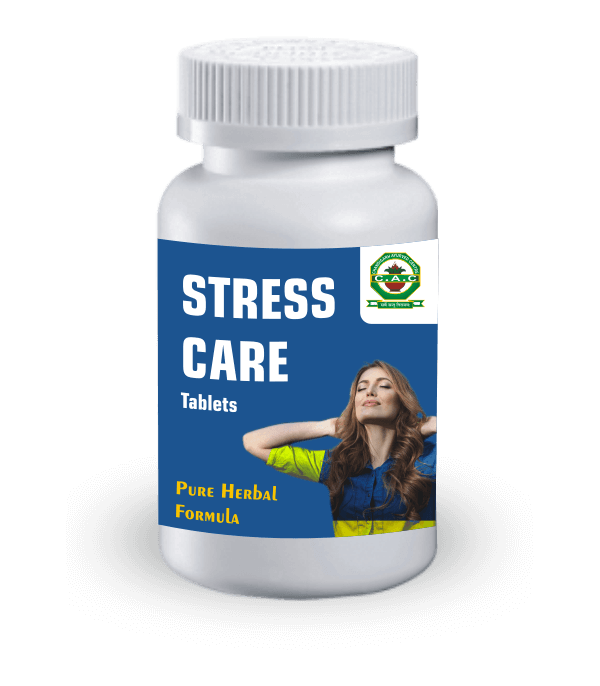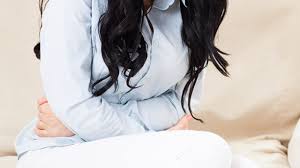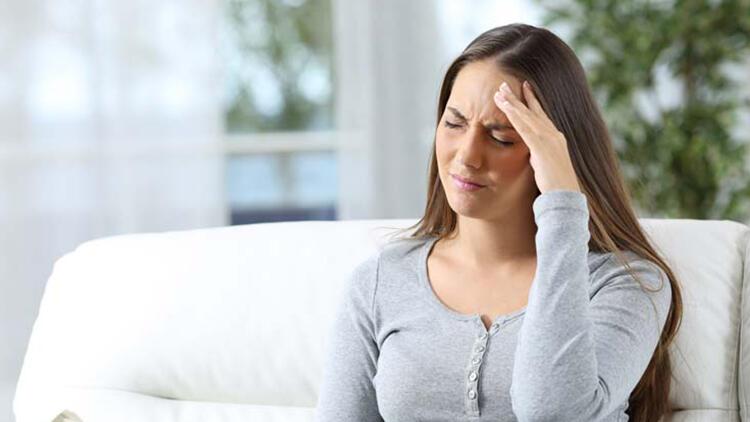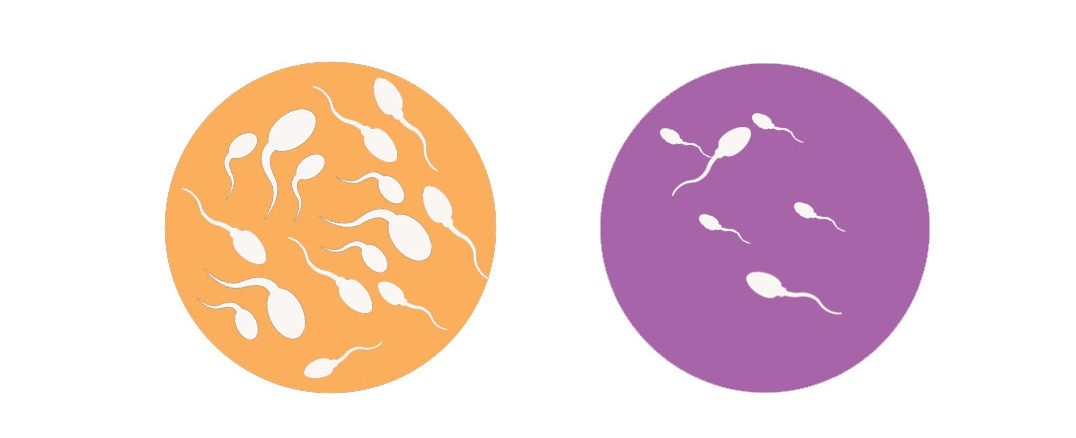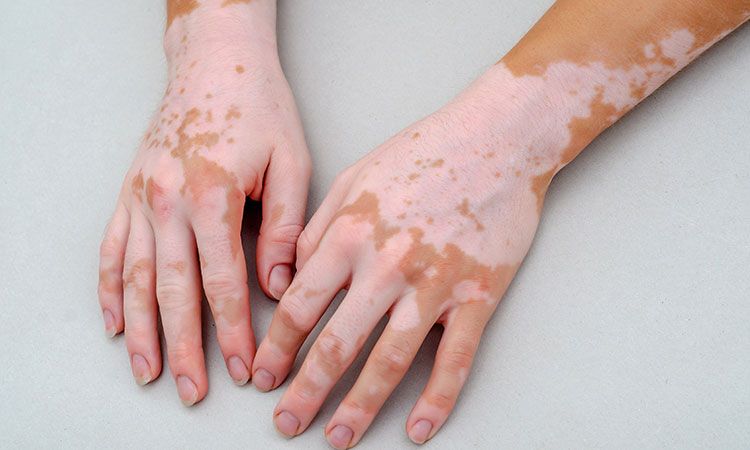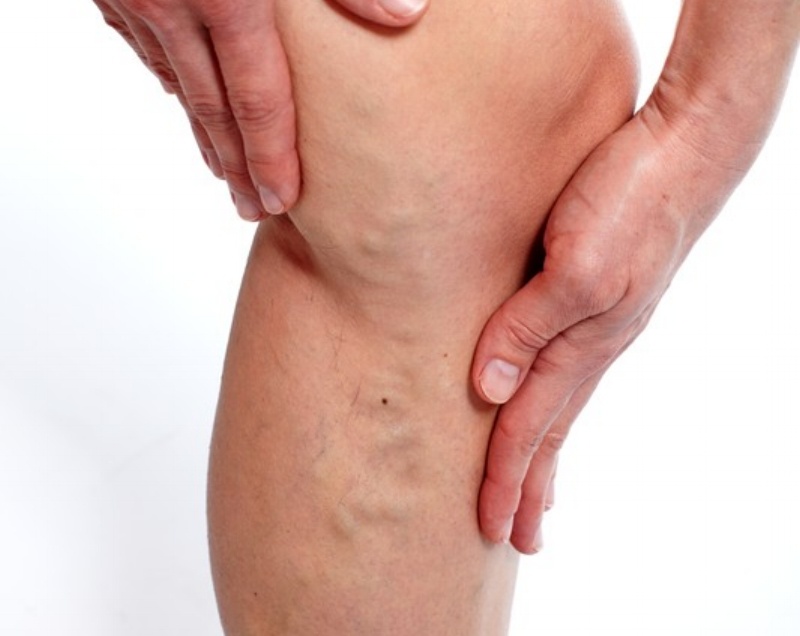Author Archives: Dr. Vaidya Karanvir Singh
HOW TO GET RID OF UTERINE FIBROIDS WITH EFFECTIVE HERBAL REMEDIES
- October 5, 2021
- Posted by Dr. Vaidya Karanvir Singh
- 0 Comment(s)
DESCRIPTION
UTERINE FIBROIDS
- Uterine fibroids is a noncancerous growths of the uterus
- It appears during childbearing years also called leiomyomas or myomas.
- It not increased the risk of uterine cancer and almost never develop into cancer.
- It is frequently found during general pelvic examination where doctor feel irregularities in the shape of uterus, and suggesting the presence of fibroids.
- Small fibroids do not need treatment, but larger fibroids can be treated with medications or surgery.
CAUSES OF UTERINE FIBROIDS
The cause of uterine fibroids is not known. Hormones and genetics factors might make women more likely to get fibroids
- Hormones – Estrogen and progesterone are the hormones that make uterus lining thicken every month during menstrual. These hormones affect fibroid growth. Hormone production slows down during menopause stage, then fibroids shrink usually.
- Genetics – studies found that genetic differences between fibroids and normal cells in the uterus cause fibroids.
- Other growth factors – insulin-like growth factor play a role in fibroid growth.
- Extracellular matrix – ECM makes cells stick together. Fibroids have more extracellular matrix than normal cells, which makes them fibrous. Extracellular matrix also keeps growth factors in it and cause cells to change.
SYMPTOMS
Many women have asymptomatic with the presence of fibroid it can be influenced by the location, size and number of fibroids. Women who have symptoms during the presence of uterine fibroid include:
- Heavy menstrual bleeding
- Bleeding between periods.
- A feeling of fullness in lower abdomen/bloating.
- Frequent urination
- Pain during sex
- Low back pain and leg pain
- Pelvic pressure or pain
- Constipation
- Chronic vaginal discharge
- Rarely does it cause acute pain when it outgrows its blood supply, and begins to die.
TYPES OF UTERINE FIBROID
Fibroids are generally classified by their location.
- Intramural fibroids – grow in muscular uterine wall.
- Submucosal fibroids – bulge into the uterine cavity.
- Subserosal fibroids – project outside of the uterus.
WHO IS AT RISK FOR UTERINE FIBROIDS?
There are several risk factors that can play a role in the development of fibroids. These can include:
- Obesity and a higher body weight
- Family history of fibroids.
- Not having children.
- Early onset of menstruation
- Late age for menopause
DIAGNOSIS
- Ultrasonography
- Magnetic resonance imaging (MRI)
- Computed tomography (CT)
- Hysteroscopy
- Hysterosalpingography (HSG)
- Sonohysterography
- Laparoscopy
- Hysterosonography
AYURVEDIC POINT OF VIEW FOR UTERINE FIBROIDS
- In Ayurveda, it is considered as Garbhashyagata (intrauterine) Granthi (encapsulated growth).
- Symptoms of uterine fibroid are similar to the condition “pradara” which is menorrhagia.
- It is usually develop before menopause.
- It is caused due to an imbalance of Tridosha doshas, in particular, the kapha dosha.
- If there is bleeding it means the pitta is aggravated,
- The uterus being the spot of the apana vayu, a fault in the vata is implied.
- CHANDIGARH AYURVED CENTRE has herbal medicines for uterine fibroids such as Kanchnaar Guggulu, Women Power Plus, Women Champion Syrup, Femine Care Tablet, Trikatu Tablet these medicine are very effective in treating imbalanced tridoshas specially kapha dosha in females.
CAC HERBAL TREATMENT FOR UTERINE FIBROID
- Femine care tablets – Femine care tablet is an Ayurvedic formulation that work on female reproductive system and make it healthy. Ghritkumari (Aloe Vera), Muramakki (Commiphora myrah), Sonth (Zingiber Officinale), Hara Kasis. These tablets shows antioxidant, anti-inflammatory and immune-modulator properties. These tablets helps to treat polycystic ovarian syndrome, endometriosis, amenorrhea, dysmenorrhea, uterine fibroids etc.
Recommended Dosage – Take 1 tablet twice daily.
- Kanchnaar Guggul Tablets – These are classical herbal tablets that are in use for cyst type of problems. The tablets relieve all the signs and symptoms related to uterine fibroids patients. Kachnaar Guggul tablets are prepared from Kachnaar (Bauhinia variegate), Shunthi (Zingiber officinale), Maricha (Piper nigrum), Pippali (Piper longum), Haritaki (Terminalia chebula), Bibhitaki (Terminalia bellirica), Amalaki (Emblica officinalis), etc that shows anti-inflammatory, analgesic, antioxidant, etc properties.
Recommended Dosage – Take 1 tablets twice daily with normal water.
- Trikatu Syrup – This herbal syrup is prepared from three ingredients like Long pepper (Piper longum), Black pepper (Piper nigrum), & Ginger (Zingiber officinale). Trikatu syrup reduces nausea, vomiting, loss of appetite related to uterine fibroid patients.
Recommended Dosage – Take 1 teaspoonful twice daily.
- Women Champion Syrup – Woman Champion is a pure herbal and ayurvedic formulation that is an effective tonic for women and helps to maintain their health. It balances all the doshas of the body and it also maintains the hormonal levels. It has Lodhra, Manjishta, Ashok chaal Punarnava, Shatavar, Bala, Daruharidra, Nagarmotha present in it that help the women in symptoms like mood changes, stress, headache and pain.
Recommended Dosage – Take 1 teaspoonful twice daily.
- Women power plus tablet – CAC woman power tablet is a complete health supplement for women which is best for female health and vital energy. It helps to build up the immunity. This is a pure herbo mineral product of the best quality herbs. The herbs used are Ashoka, Shatavari, anatmool, etc. These are herbs used since ancient times to maintain female health metabolism. It works well in the reproductive system and other health-related disorders. The extract of these herbs is used which provides multiple health benefits. These herbs have the potential to improve female health and libido.
Recommended Dosage – Take 1 tablets twice daily with normal water.
HOW CAN VARICOSE VEINS AFFECT YOUR LIFE
- October 5, 2021
- Posted by Dr. Vaidya Karanvir Singh
- 0 Comment(s)
DESCRIPTION
The word “varicose” meaning “twisted”. Varicose veins are enlarged or twisted veins usually bluish purple in color. They most commonly occur in legs, feet, and lower regions of body, and also occur in various other parts of body including arms, upper body, and mid-section. Veins have small one-way valves that ensure blood flows towards the heart. In some people, these valves become weakened and blood collects in the veins, causing them enlarge abnormally.
CAUSES
- Varicose veins occur as a result of veins experiencing too much pressure mostly occur to veins that are either damaged or weak.
- Risk for varicose veins depends to various different factors, including age, sex, and the genetics
- Risk of developing varicose veins also increase if people are obese, pregnant, or responsible for sitting or standing for long periods of time throughout the day.
- Varicose veins also increases with age, because veins weaken as people grow older. They occur as a result of veins being placed under too much pressure for too long.
SYMPTOMS
- Dark purple or blue veins
- Skin discoloration
- Itching around your veins
- Twisted or bulging veins at the surface of skin
- Worsened pain after people standing for too long
- Heaviness feels in legs
- Swelling around discolored veins
- Random burning sensation or muscle cramping
NATURAL REMEDIES FOR VARICOSE VEINS
Ayurveda Massage
- According to Ayurveda varicose veins signal the vata dosha is impaired.
- The vata dosha controlling movement in a person’s mind and body also play key role in blood flow, which explains why vata dosha disruption results in varicose veins.
- In Ayurveda Abhyanga focuses on stimulating pressure points to improve the body’s internal balance.
- The Abhyanga included herbal oils and gentle pressure in areas where there is pain.
- The massage stimulates blood flow to ease varicose vein symptoms and Swedana therapy applies steam make blood flow smoothly in upwards direction.
- Veshtana wrap tightly around the infected legs provide muscles strength as well as relieves the pain, heaviness, and numbness in affected region.
Vasti Herbal Enema
- Enema therapy expel toxins and improves blood flow.
- Vasti done using medicated liquids or oils.
- Vasti pushes toxins through the anus, urethra, or vaginal canal.
- Vasti remain long period in people body that nourishes the body with medicated liquids that travel to the intestine and colon.
- When these liquids released from the body they remove harmful toxins. It is one of the most effective methods of detoxifying the body.
- In case of varicose veins, the vasti treatment reduces pain, swelling also improves skin health and hydration to prevent varicose veins formation.
Yoga
- Yoga naturally manages varicose vein symptoms.
- Stretches relieve swelling and soreness in the legs.
- Yoga poses improve blood circulation.
- Yoga helps people maintain healthy weights.
- It relieves stress and increases brainpower.
Herbal Remedies
- Guggulu is one of the purifying herbs in Ayurvedic medicine. Guggulu detoxify unhealthy tissue and give relieve in pain and inflammation caused by varicose veins.
- Ashwagandha has been used too long to treat condition. The ashwagandha extract fights inflammation, reduces cortisol levels in body, and increases muscle mass.
- Brahmi grows in wet environments. It is used in Ayurvedic medicine to boost brain and memory functions. Brahmi reduces varicose vein inflammation and carries nutrients that decrease the veins’ discoloration.
- Manjishta treats skin disorders. It purifies the blood and dissolves bind in the bloodstream. It reduces inflammation to heal damaged skin. Manjishta treats varicose vein, acne, eczema, and hyper-pigmentation
CAC HERBAL TREATMENT FOR VARICOSE VEIN
- Detox Premium Powder – This is the herbal formulation that consists of sudhyog tablet, shwet parpati, yavakshaar, akik pishti, jahar mohra, giloy satav, shukta pishti, etc. Intake of this wonderful remedy will balance the aggravated doshas and cleanse your body by removing the toxins from the body, as it also unblocks the passage and allows the blood to freely pass from the passage.
Recommended Dosage – Take 1 sachet twice daily with normal water.
- Kanchnaar Guggulu – Kanchnaar guggulu is the best ayurvedic medicine widely used in wound healing, reduces the pressure of blood, swelling, etc. The tablet is very beneficial in calming the imbalance of Vata dosha thus relieving the pain, reduces the level of blood urea naturally.
Recommended Dosage – Take 2 tablets twice daily with normal water.
- Trikatu Syrup – This herbal syrup contains equal proportions of three spices with a pungent taste – Black pepper (Piper nigrum), Pippali (Piper longum), and Ginger (Zingiber officinale). It is the best syrup to normalize the Tridosha and helps in the elimination of toxins, increases the appetite, and improves digestion. This syrup has a carminative and expectorant effect that helps to ease the symptoms of varicose vein.
Recommended Dosage – Take 2 teaspoonfuls thrice daily.
- Trikatu Tablet – Trikatu tablets are composed of three natural herbs – Ginger (Zingiber officinale), Black pepper (Piper nigrum), Pippali (Piper longum) that improves the blood circulation by correcting the obstructed passage. It is beneficial in the detoxification of the blood. These tablets also provide strength to muscles and resolve the obstruction in the veins and arteries channels.
Recommended Dosage – Take 1 tablet twice daily with normal water.
- Varicose Vein Tablet – CAC Varicose vein is an herbal supplement which maintain healthy blood circulation. It helps to maintain healthy veins and other blood vessels as well. Enlarged, swollen, and twisting veins, often appearing blue or dark purple are known as varicose veins. They occur when blood flow in the wrong direction due to faulty valves. These are large, swollen veins that often appear on the legs and feet. The veins usually do not need any treatment but if there is considerable discomfort or swelling, aching, and painful legs result, treatment is available. Ayurvedic and panchakarma treatment do wonders in varicose veins.
Recommended Dosage – Take 1 tablet twice daily.
- Panchsakar Churna – This churna is very effective for varicose vein patients as it shows antioxidant, anti-inflammatory, laxative, and analgesic properties. It is a classical herbal churna prepared from ingredients like Shatapushpa, Balaharitaki, Shunthi, Swarnapatri, & Saindhav lavana. It helps in removing all toxins from the body and provides good results to patients of varicose vein.
Recommended Dosage – Take 1 teaspoonful at bedtime with warm water.
HOW TO BE STRESS FREE W.R.T STRESS CARE TABLET
- October 5, 2021
- Posted by Dr. Vaidya Karanvir Singh
- 0 Comment(s)
Hans Selye who is also called father of stress research. He said that our stress does not kill us, but our reaction takes our lives. On How to Stay Calm, we all have certain expectations from ourselves and our lives, which sometimes require a lot of deep and deep thinking to fulfill. But when this habit of thinking and taking a little stress turns into chronic stress and anxiety, it is not known.
Due to this habit of over stress, cortisol is also called stress hormone in the brain. It starts releasing in very large quantities which can become chronic stress and also cause mental illness. How to Stay Calm Friends Just like we need raincoat and umbrella to keep us from rain, similarly we should have some methods and ways to avoid these stressful thoughts rain. The same methods, techniques, and methods of managing stress in the journey of this life. Today we are sharing with you.
- Amor Fati:
- Find A Solution And Move On:
- Practice Deep Breathing:
- Practice Mindfulness:
- Disconnect Yourself For A While:
1. Amor Fati:
Amor Fati is a Latin phase which means love of fate i.e. be it good or bad in life with you, you should always be ready for both the situation and accept it willingly. If you really want to achieve greatness in your life, then this idea is also found in the writings . Thinking about the future excessively creates stress and anxiety.
At the same time, applying Amor Fati in your life gives you freedom from such stressful thoughts. That is, today you just have to focus on your process and enjoy it without stressing about research or outcome. It does not mean at all that you should stop thinking, it is necessary to think. This is what makes us humans different from animals. But worry is not a problem, thinking and worrying are two different things. Most of the time the reason for our stress is also fear about our own future.
So instead of fearing or thinking of a 100% secure future, you should focus on making great achievements in your today. You should focus on today, without taking much stress about it, understand what will be the outcome or result, whatever will be the result or outcome in the end will not take your life, but you will always have some way or the way. to move on
For example suppose you are a musician and you practice as much as you can every single day and try to make your best music every day but at the same time you remain detached from the outcome or result then at this time it will happen that All your focus will shift from your aim/goal and future will come only and only in your present movement.
Which will make you feel a kind of enlightenment from the stress that you were doing about an undesirable outcome. Anyone who has achieved something extraordinarily since history, has done it not by stressing about the future, but by focusing on the present moment and achieving mastery without worrying.
2. Find A Solution And Move On:
You understand this graphic properly. Guru Gopal Dasji has also mentioned this in his book Life’s Amazing Secrets. So whenever you are worried or stressed, ask yourself these questions. Is there any problem in your life or not? If there is no problem then this thing ends and then there is nothing to worry about but if there is a problem in your life then ask yourself whether there is any solution to this problem or not. Is this under my control?
Now if there is any solution for your problem then apply that solution and solve your problem. But if your problem is such that there is no solution and which is not in your control, then what will you get by worrying about it. Now it simply means that you do not have to worry in any situation or condition of life. There is a need to find a solution by thinking productively and not by taking stress reactively. Focus on what is in your control instead of stressing about what is not in your control and which you cannot do anything.
How to Stay Calm
3. Practice Deep Breathing:
Whenever you are feeling very stressful in any situation, at that time you can track your mind with the help of deep breathing and send this signal that I am very calm, cool and collected so that we can spend few minutes mentally calm and stress free. Doctors also consider deep breathing as an instant remedy for stress and if someone is stressed daily, then that person can correct this problem with the help of daily meditation or deep breathing. Now doing meditation is not easy for everyone but it is not that difficult to practice deep breathing for some time a day.
When we take deep breath, we give a signal to our brain that we are in a safe environment, so friends, when you get that time, you can practice it and one of the special things of deep breathing is that we can do it anywhere and anytime. If you feel distraction or boredom while doing this, then you can also do Stair Step Breathing Exercise.
In this, you have to maintain constant focus on your body and mind and you will find its full tutorial and guide videos on the internet from which you can learn. Deep breathing calms our body and mind and the calmer we feel, the less stressful we feel.
4. Practice Mindfulness:
By now you have understood. It would be that it is necessary for us to think but not to take stress, but our thinking sometimes causes over thinking and over thinking of our stress, how can we think in balance. We are all ambitious. We all have our own dreams and goals, for which many times it is necessary for us to think deeply, which we should not avoid at all. This is what makes us different from others, but it is important to think in a balance and think right and not just over thinking.
Mindfulness will help you to fix this. It means to be 100% present in any particular movement. That is, at the time whatever you are doing, do only that time, do not put any other thought in your mind. That is, at the time when you are studying, only at the time when you are using the phone, then use the phone from that time and do not think about anything. When you are working, then work at that time and when you are walking, then focus only on the walk. While you are brushing while you are thinking of brushing others and distance, then just think.
Practice Mindfulness
How will this happen? Its best and fun simple step will be that you set a time for each thing and in that time only and only thing has to be done exactly like time blocking or time management. But in this, people set time for their work or activities, but if not thinking time, then in whatever your daily timetable is, you can set 15 or 30 minutes separately according to yourself.
In How to Stay Calm, now in these 15 or 30 minutes, you just have to think and try to come up with practical solutions. Why because this is your separate thinking time and when this time is over, then you have to try that you do not think again at all. After this, do only that at the time of work or study without bringing any thought in your mind. Tell yourself, I will not think now, but I will think thinking time. This same thinking time is also used by some of the most successful people in the world.
5. Disconnect Yourself For A While:
When you get a stressful e-mail, your friend gives you some bad news, and or something happens that you didn’t expect and don’t like, it’s a simple and easy survey about that. Panic feeling stressed. But at this point you should disconnect yourself from that problem for a while. Taking a few steps back for a while prepares us for a big leap, so don’t react at that time.
Disconnecting from that problem for a while gives you a breathing space. You can do some other work in this space. You can go on a walk . You can exercise with your dog, that is, any such thing that can give you a break for some time. When you take this break, then come back to that problem again and then think how should I handle it. Doing so will save you from having to react immediately.
Because immediate reaction is influenced by our most highly stressful, anxiety or panic, due to which we panic many times and take wrong decision, which then harms us, then instead of immediate reaction, be calm and collected, you have to understand the situation first and react after sometime.
Stress care tablet
CAC Stress care tablet is an amazing combination of natural herbs like Sarpgandha, Brahmi, Tagar, jatamansi. It helps to relieve stress conditions. They help to pacify the nervous system and also helps to increase the mental and physical performance.
In Ayurveda when there is an imbalance of three energies i.e. vata, pitta and Kapha, it leads to disease. Vata has a sub dosha named prana doshas which regulates the sensory perception, brain, and mind. Tarpak Kapha subtype of kapha, governs cerebrospinal fluid, sadhak pitta subtype of pitta doshas governs emotions and their impact on the heart. So any vitiation of these doshas leads to stress. Stress care plus tablets is effective in depression, anxiety, insomnia, amnesia, Alzheimer’s disease, obesity, and hypertension.
BENEFITS:
- Maintain stress level
- Provide strength to the nervous system
- Good in neurological problems
- Anxiety
- Loneliness
- Insomnia
- Depression
- Negative emotions
- Enhance concentration in studies and other work
- Amnesia
- Alzheimer’s disease
- Palpitations
- Hypertension
- Asthma
- Obesity
- Diabetes
- Headaches
Ingredients:
Each 650 mg tablet contains:
Sarpgandha (Rauwolfia serpentina) – 325mg
Brahmi(Bacopa monnieri) – 162.5mg
Jatamansi(Nardostachys jatamansi) – 162.5 mg
Dosage– 1 tab twice daily with plain water
How to Treat Digestive Problems with Home Remedies
- October 5, 2021
- Posted by Dr. Vaidya Karanvir Singh
- 0 Comment(s)
People’s health has also been affected after the decision of lockdown across the world to protect against Corona virus Pandemic. Due to the lockdown, people have now tied themselves in their homes. People are not only following social distancing but are also doing office work from home. Work from Home is now being called the New Normal.
But, due to continuous sitting and working and lack of physical activities, the functioning of the body is also getting affected (Side Effects or Sedentary Lifestyle). In such a situation, people have started having stomach problems during work from home. Due to the sluggishness of the digestive system, many problems like bloating, gas, indigestion, acidity and sour belching, people are feeling during this time.
Similarly, due to not eating food on time, changing the time of sleeping and waking up and even due to wrong choice of food items i.e. unhealthy eating, people are also facing many stomach related problems. When you do not eat at the right time, your problems increase, which can lead to serious problems like chronic constipation or irritable bowel syndrome (IBS).
Remove the problem of indigestion, basil leaves, know how much should be consumed, its benefits
Constipation and indigestion problem even after eating light food? Do these easy steps and get relief in a pinch
Make the digestive system strong with ginger, rock salt and lemon:
If you consume some domestic and Ayurvedic things, then these problems related to your stomach are reduced to a great extent. Due to which, these simple things that improve digestion are available in your kitchen. One such thing is ginger. Whenever there is a problem of indigestion, take some ginger or dry ginger. You can also drink it by mixing it with rock salt and lemon juice. The mixture of these three will eliminate all the problems related to digestion and will also give rest to your stomach.
This mixture of ginger, rock salt and lemon helps in the production of digestive juices by reaching the stomach. Therefore, consuming it before meals can be beneficial for you. In such a situation, people who often feel problems like stomach gas or indigestion, prepare this mixture before meals and lick it. ( Ayurvedic Home Remedies for Indigestion)
Why this mixture is beneficial:
Ginger – Along with being digestive, reduces problems like nausea and vomiting. It enhances digestion, so that your food is easily digested and you get relief from stomach related problems.
Rock salt- Increases the metabolism of the body. Thereby, it helps in creating pH balance in the body and in the formation of electrolytes. Due to which all the functions of the body work smoothly.
Lemon – Being a good source of Vitamin C, it not only improves digestion but also strengthens your immune system. (Home Remedies for Indigestion)
How to Treat Digestive Problems with Home Remedies
To correct and strengthen poor digestion, include ginger in your food. It produces digestive juices and enzymes that digest food in the body. The carminative, antibacterial, antiviral, properties found in it prevent your digestive power from getting worse.
Use 2 to 3 cups of ginger tea with honey without milk in a day.
Chew small pieces of ginger after eating to keep the digestion process right.
Probiotic food
Probiotic foods strengthen your digestive system and its ability to function. The Lactobacillus and Bifido bacteria found in it restore your gut bacteria in a natural way as well as protect and treat any kind of digestion problem. Yogurt, buttermilk, kefir, cabbage, and sour pickles are great probiotic foods.
Peppermint
The use of peppermint corrects your poor digestion and helps in protecting against diseases related to digestion. It provides relief from gas formation in the stomach, bloating and cramps due to prolonged abdominal pain.
Put a spoonful of peppermint leaves in a cup of hot water and keep it covered for 10 minutes and then filter it and drink it. Drink peppermint tea twice a day.
Use peppermint leaves by sprinkling them in food daily or use with salads. Apart from this, you can also use peppermint capsules 2 to 3 times a day for a few weeks.
Fennel
The use of fennel provides great relief in heartburn, indigestion and acidity. It also provides relief in abdominal cramps, cramps.
Using a spoonful of fennel after eating helps indigestion.
When the digestive system is bad, drink half a teaspoon of fennel powder with a glass of water twice a day. Put a teaspoon of crushed fennel in a cup of hot water and use it as a tea.
Asafoetida
The antioxidant, anti-inflammatory properties found in asafoetida are good for digestion. It is very effective in the treatment of gas, abdominal pain, flatulence, food poisoning etc.
To keep the digestion right, mix a pinch of asafetida in a glass of warm water and use it after eating.
Mixing a little asafetida in water and rubbing it around the navel of small children will get relief from gas and pain in the stomach.
Apple Cedar Vinegar
It helps to keep your digestive system healthy. Acid is found in it, yet it has an alkalizing effect in your body. It helps in improving digestion and treating problems like indigestion, gas, bloating. Apart from this, pectin is found in it, which is a water-soluble fiber that regulates bowel movements.
To keep the digestive system healthy, drink a cup of hot water with a spoonful of apple cider vinegar and a little honey and drink it 2 to 3 times a day.
Isabgol
Isabgol makes your digestion regular and strong. The insoluble fiber found in it facilitates bowel movement and helps in problems like flatulence, gas, constipation etc.
Mix half to one teaspoon of Isabgol husk in a cup of warm water or milk and drink it before sleeping, doing this will clean your stomach properly in the morning.
Aloe vera
The laxative property found in it helps in the smooth functioning of the digestive system. It is beneficial in many digestive diseases, inflammation, burning and even stomach ulcers.
Mix two spoons of aloe vera gel in a cup of water or orange juice and drink it every morning on an empty stomach.
Note- Pregnant women or women who are lactating children should not use it.
Turmeric
The curcumin element found in turmeric helps in the removal of bile from the gallbladder and proper functioning of the liver. It is used in the treatment of various digestive problems including indigestion, peptic ulcer, IBS, ulcerative colitis.
To prevent digestive problems, drink half a teaspoon of turmeric juice with a glass of water. You can also use curcumin supplements. Consult a doctor for its regular dosage.
Oatmeal
Oatmeal contains ample amount of fiber which removes your complaint of constipation. It is low in fat and easy to digest, meaning you can use it even when you are suffering from diarrhea.
Start the day for a healthy digestive system
Some of the following measures can be adopted to prevent diseases of the digestive system. Do not consume soft drinks.
- Food should be eaten slowly.
- Do not eat more than one meal at a time.
- Eat light food at night.
- do not smoke.
- Do not eat very greasy be done.
- Clean your hands and eat food.
- and spicy food.
- Do not lie down immediately after eating.
- Daily exercise and yoga should
If you have an urge to have a bowel movement, then you should go to the toilet immediately. Due to not going at that time the stool becomes hard, due to which there is difficulty and pain in bowel movement.
Whatever medicines you are taking, check them thoroughly because some medicines cause the problem of burning in the stomach.
Effective Home Remedies For Vertigo
- October 5, 2021
- Posted by Dr. Vaidya Karanvir Singh
- 0 Comment(s)
VERTIGO DEFINITION – It cause dizziness that creates false sense to people. People feel their surroundings are spinning or moving round.
CAUSES
Common causes include:
- Benign paroxysmal positional vertigo – most common cause of vertigo and creates a brief sense that people spinning or moving. These episodes are triggered by a rapid change in head movement such as a blow to the head.
- Infection – A viral infection in vestibular nerve called vestibular neuritis cause intense and constant vertigo.
- Meniere’s disease – When excessive fluid builds up in the inner ear result sudden episodes of vertigo that last for several hours.
- Migraine – it induced vertigo that last for minutes to hours.
SYMPTOMS
- Balance problems
- Lightheadedness
- A sense of motion sickness
- Nausea and vomiting
- Tinnitus
- A feeling of fullness in the ear
- Headaches
- Uncontrollably eye movements usually from side to side
HOME REMEDIES FOR VERTIGO
Ginger tea
- Ginger root can decrease the effects of vertigo better than manual repositioning.
- Ginger root can be dipped into a cup of boiling water for 5 minutes.
- Honey can help with the bitter taste.
- Drink ginger tea twice a day may help in dizziness, nausea, and other vertigo symptoms.
Almonds
- Almonds are rich source of vitamins A, B, and E.
- Eating daily handful of almonds can help with vertigo symptoms.
Staying hydrated
- Dehydration can cause vertigo.
- Mild dehydration can trigger vertigo.
- Staying hydrated can help in minimize the dizziness and balance issues.
- The body needs 8 to 12 cups of liquid per day this includes all liquids but water is the best option because it is calorie- and caffeine-free and not a diuretic.
- Diuretics increase the amount of water and salt the body expels as urine.
Apple cider vinegar and honey
- Both apple cider vinegar and honey have curative properties to relieve blood flow to the brain.
- Two teaspoon of honey and one teaspoon of apple cider vinegar can prevent and treat vertigo.
Yoga
- Yoga can help to regain balance, focus, coordination, and movement and reduced the effects of vertigo.
- Simple positions like Child’s Pose with deep, regular breaths can calm the body and mind.
- Reducing anxiety.
- Yoga and deep breathing prevent vertigo attacks in some people.
Epley Maneuver Technique
- The Epley Maneuver technique is advised by physical therapists for managing Vertigo at home.
- This Technique involves a series of head-tilting exercises which Vertigo patients are required to do before they go to bed at night.
- Exercise involve head movements for repositioning loose calcium carbonate crystals inside the inner ear.
Essential Oils
- Essential oils can also be useful in managing Vertigo symptoms like headache, nausea, and dizziness.
- These oils can be inhaled or applied topically to relieve the condition.
- Some beneficial essential oils for treating Vertigo include peppermint, lavender, lemon, and ginger essential oils.
Adequate Amount of Sleep
- Lack of sleep or sleep deprivation can be one of the causes of Vertigo attacks.
- A short duration of sleep during Vertigo attack can help to managing the condition in a natural way by resolving the feelings of dizziness and spinning.
Avoid Alcohol Consumption
- Avoiding alcohol completely or cut its consumption can be helpful in managing Vertigo symptoms.
- Alcohol trigged feeling of dizziness, affect body balance, and give dehydrating effect on the body.
Azoospermia
- October 5, 2021
- Posted by Dr. Vaidya Karanvir Singh
- 0 Comment(s)
About Azoospermia
Azoospermia is the medical term used when the semen contains no sperm during ejaculation.
It can be “obstructive” and non-obstructive, obstructive means there is a blockage that prevents sperm from entering the ejaculate, or “non-obstructive” means decreased sperm production by the testis. It is associated with male infertility. It happens approx 1% of all men and 15% of infertile men.
Causes of Azoospermia
Causes of obstructive azoospermia – Obstructions occur most commonly in the:
- Epididymis – The coiled tube structure on the back of each testicle where sperm matures.
- Vas deferens – Tube-like structure that transports sperm from the epididymis.
- Ejaculatory duct – The tube from where sperm exit into the urethra and mix with fluid to form semen.
- Epididymis blockages – Several conditions can cause the blockage in the epididymis:
- Infections
- Inflammation
- Scrotal trauma/injury
- Rare genetic conditions
- Surgery on the vas deferens – During vasectomy surgeon cuts or clamps each vas deferens, stopping the flow of sperm. There are other conditions that have the same impact:
- Trauma/injury
- Previous surgery like hernia repair
- Cystic fibrosis gene mutations
- Ejaculatory duct blockages – Some ejaculatory duct blockages are present at birth. Others develop later such as:
- Infections
- Trauma
- Prior surgery
- Endoscopic surgery
- Causes of non-obstructive azoospermia – There are numerous causes of non-obstructive azoospermia:
- Genetics
- Y chromosome deletion
- Karyotype abnormality
- Radiation and toxins
- Medications
- Hormone imbalances
- Varicocele
- Other causes include Illegal drug use, excessive drinking, and smoking.
Azoospermia Classification
1. Testicular Azoospermia – Testis are abnormal, atrophic or absent.
- Sperm production is severely disturbed.
- Testicular failure occurs which includes failure to produce sperm and maturation arrest during the process of Spermatogenesis.
2. Pretesticular Azoospermia – It includes inadequate stimulation of normal testicle and genital tract.
- This occurs as Follicle Stimulating hormone is low which leads to inadequate stimulation of testis to produce sperm.
3. Post-testicular Azoospermia – In this condition sperms are produced but not ejaculate
- This condition affects 10 to 80 percent men.
- Physical obstruction to post testicular tract leads to this condition.
- Vasectomy done to induce contraceptives most common cause of this.
- Congenital obstructions.
4. Testicular Failure – Radiation, chemotherapy surgical procedure lead to testicular failure.
- Congenital issue such Klinefelter syndrome can lead to this condition.
How to Prevent Azoospermia?
- Avoid activities that injure the reproductive organs.
- Avoid exposure to radiation.
- Know the risks and benefits of medications that harm sperm production.
- Avoid lengthy exposure of testes to hot temperatures.
- Stay away from activities like rough contact sports that may harm testes and reproductive tract.
- Avoid testes expose to high temperatures, like saunas or steam baths.
Ayurvedic Treatment of Azoospermia
- Azoospermia treatment in Ayurveda is quite effective to elimination azoospermia.
- Vaaji Ras as a method which includes three necessary herbs that deal with this problem. Mushli, Kaanch, and Shatavari help with hormonal imbalance.
- Arjuna help in the accurate blood flow throughout the pelvic region
- Ashwagandha regulate nerve interactions.
- Vaaji Ras is essentially refers to the ayurvedic treatment for infertility.
- These natural remedies for erectile dysfunction are found in the Himalayan Mountain.
- Shatavari, Kaunch herbs used for infertility help to increase sperm count immensely by naturally boosting hormonal balance in the body.
- It has the property of stimulating and calming the body, increases the levels of testosterone in the blood and reproductive system due to increased blood circulation
Also Read – Ayurvedic Remedies for Premature Ejaculation and Erectile Dysfunction
Why Use Ayurveda?
- Allopathic and surgical procedures are generally recommended by doctor’s that lead undue side effects.
- Usage of steroids which is prevalent leads to addiction and causes fatal errors in the functioning of other systems of the body apart from the reproductive system.
- The risks of surgical procedures are dangerous and might lead to permanent damages within the body.
- Undesirable effects of allopathy medicines are not found in ayurvedic medicine for infertility.
- Ayurveda medicine for infertility are natural.
- Ayurvedic treatment is natural and completely harmless with no side effects arise as a result of treatment.
- Ayurveda cures infertility problems right at the root of the issue.
- Ayurvedic medicines are non-steroidal preparations, do not tamper with the natural processing of the body, and do not cause any addiction and no risks related to other body functions.
- Along with the improvement of reproductive organs, the other parts of the body are also stimulated as a consequence.
- The medicines being pure and non-addictive are also safe when taken regularly until desired results are achieved.
- Ayurveda treatment for azoospermia including the best herbal and natural remedies for erectile dysfunction, boost libido and the male reproductive system.
- It is the best choice of treatment for eliminating infertility permanently so that people lead a healthier and brighter life altogether.
Top 10 Effective Home Remedies For Vitiligo
- October 5, 2021
- Posted by Dr. Vaidya Karanvir Singh
- 0 Comment(s)
DESCRIPTION
- Vitiligo is a chronic disorder that causes loss of skin color in patches.
- The discolored areas usually get bigger with time.
- It can affect any part of the body skin and the inside of the mouth.
- It is the result of the skin’s melanocytes the cells responsible for giving the skin color being destroyed.
VITILIGO CAN BE
- Generalized – It is the most common type when macules appear in various places on the body.
- Segmental – it is restricted to one side of the body such as hands or face.
- Mucosal – which affects mucous membranes of the mouth or genitals area.
- Focal – it is the rare type, do not spread in a certain pattern.
- Trichome – the macule have white or colorless center, lighter pigmentation, and normally skin.
- Universal – rare type of vitiligo.
CAUSES
- Autoimmune disorder – The person with vitiligo, immune system develop antibodies that destroy melanocytes.
- Genetic factors – vitiligo can be inherited. About 30% – 40% cases of vitiligo run in families.
- Neurogenic factors – A substance that is toxic to melanocytes may be released at nerve endings in the skin can effect vitiligo.
- Self-destruction – A defect in the melanocytes destroy themselves.
HOME REMEDIES FOR VITILIGO
1. Papaya – Papaya is a delicious and beneficial fruit for health.
- It is effective against vitiligo.
- Take a pieces of papaya rub on the patches of skin affected. Wash when it dry.
- Consume papaya juice regularly refill the body melanin cells lost due to vitiligo.
2. Red clay – it is effective treatment of vitiligo rich in copper content.
- Add one tablespoon of ginger juice or two tablespoons of red clay mix it well.
- Apply the mixture to the white patches or affected area every day.
- The ginger juice helps to increase the blood flow to the patches.
3. Reduction of stress – stress can be harmful for the body with any condition.
- Stress may not cause directly vitiligo but excess stress can cause the growth of patches caused by vitiligo.
- Stress also harm the mind, body and hamper daily functioning routine of a person.
- Take less stress prevent vitiligo from worsening naturally.
4. Sunscreen – Vitiligo is seen in the areas of skin that is regularly exposed to the sun affected by harmful ultra-violet rays of the sun.
- Apply sunscreen locally to the parts of the body exposed to the sun prevent direct exposure and also wear dresses that cover exposed area of body.
5. Drink water from a copper vessel – Staying hydrated always can help body stay fit and away from diseases.
- Stored drinking water in a copper vessel to get rid of vitiligo and increase melanin in body, reduce whiteness of patches caused by vitiligo.
6. Basil leaves – Basil leaves have anti-aging and anti-viral properties.
- These properties of basil dealing with vitiligo.
- Mix basil leaves with lime juice will stimulate the production of melanin on skin.
- Apply this mixture to skin every day for better results against vitiligo.
7. Walnuts – Walnuts have innumerable health benefits.
- Walnuts treat the body against vitiligo.
- Eating at least 5 walnuts everyday can help to deal with vitiligo.
- For better results crush walnut powder and add water to make a paste.
- Apply the paste to the affected areas of the skin every day for 10-15 minutes this will help in reduction of the white patches caused by vitiligo.
8. Foods high in zinc – While suffering with vitiligo it is important to have a well-balanced diet.
- A balanced diet help in boosting immune system.
- Make sure to include zinc in daily diet plan.
- Amounts of zinc in the body is low in patients with vitiligo.
- Zinc supplementation of the body can stimulate the healing process of the skin against vitiligo.
- Meat-based food items contain high amount of zinc.
9. Foods high in Vitamin C – Along with zinc, Vitamin C is also very important for the treatment of vitiligo.
- Vitiligo patient also suffering from vitamin C deficiency.
- Citrus fruits like lemons, orange and grapefruits contain Vitamin C and also found in strawberries, kiwi, bell peppers and broccoli reduce vitamin C deficiency.
10. Turmeric – Turmeric is effective for vitiligo.
- Turmeric and mustard oil stimulate the pigmentation of the skin and reduce patches.
- Apply mixture of turmeric powder and mustard oil for 15-20 minutes to the affected area will reduce the patch pigmentation.
- Do this remedy twice a day for positive results.
HOW TO STOP HAIRFALL IMMEDIATELY AT HOME FOR FEMALE?
- October 4, 2021
- Posted by Dr. Vaidya Karanvir Singh
- 0 Comment(s)
Hair fall is a major problem faced by an individual, especially in the rainy season.
The sight of hair strands on pillows, bathroom, and floor of the house frightens us every day. Especially the young people fear of going bald.
It’s really very important to stop hair fall, hair thinning, and get rid of bald patches at an early stage.
You can opt for home remedies for hair fall that will help you in the improvement of the quality of your hair and also keep you away from harmful chemical solutions.
Home remedies can help you to put a pause & full stop to your frustrating hair fall.
Causes of Hair Fall:
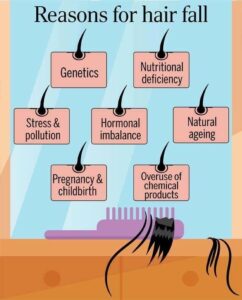
Causes of Hair Fall
Hairfall may be caused due to the following factors-
1.Increasing Environmental Pollution
2.Genetics or Family History
3.Stress and Anxiety
4.Hard work or Lack of proper sleep
5.Nutritional Deficiencies
6.Hormonal Changes in some conditions like- Pregnancy, Puberty, Menopause, Thyroid, History of intake of Birth control pills
7.Diseases & Medications such as – Autoimmune disorders such as cancer, thyroid, arthritis, and heart problems etc. may contribute to consistent hair loss. Intake of medicines like antidepressants and mood stabilizers can also lead to hair fall.
8.Hairstyles- Tight hairstyles like High ponytails & cornrow hairstyles
SOME EFFECTIVE HOME REMEDIES
1.Egg Hair Mask
Egg is definitely having unpleasant odor, but it is rich in protein, sulphur, zinc, and phosphorus.
It is an effective remedy against persistent hair fall. It helps to strengthen hair strands, promotes hair growth, and prevents split ends.
Method of use-
1.Mix 1 egg with a teaspoon of honey & olive oil
2.Apply this paste from roots to the tips with the help of a brush.
3.Leave it for 25 minutes then rinse it with a mild shampoo & in cold water
Use it once a week for better results.
2.Coconut Oil
Coconut oil is well known for skin and hair. It is an unbeatable remedy for hair fall. The fatty acids present in this oil helps to strengthen your hair roots & promotes hair growth.
How to Use-
1.Take 2 to 3 tablespoons of coconut oil and warm it up & apply it to your scalp.
2.Gently massage the scalp & leave it overnight or at least for 30minutes during the daytime.
3.Rinse it with the help of a mild or ayurvedic shampoo.
Use it two times a week.
3.Amla & Lime Juice Hair Pack to Stop Hair Loss
Amlaki or Amla is a powerful ayurvedic solution to strengthen your hair & prevent premature greying. Infused with Vitamin C, amla promotes unbeatable hair growth.
How to Use-
1.Mix 1 teaspoon of amla powder & few drops of lime juice to make a thick paste.
2.Apply the paste on your scalp for 40 minutes.
3.Rinse the paste with a mild cleanser.
Use it 1 or 2times every week.
4.Methi Hair Mask
Methika or methi seed powder is an effective home remedy to repair damaged hair follicles and promotes healthy hair growth. It is enriched with high protein content and naturally nourishes the hair follicles; Resolves the dandruff problem and create a voluminous bounce.
How to Use –
1.Soak 2 teaspoons of the Methi seeds overnight.
2.Make a paste with the help of a grinder & gently apply it to your scalp.
3.Keep it for one hour and gently rinse with water.
Use this pack once a week.
CAC SPECIAL HAIR CARE PACK
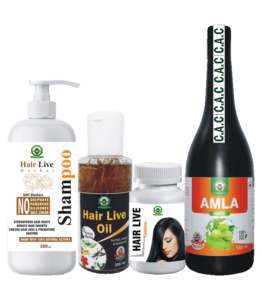
CAC SPECIAL HAIR CARE PACK
1. Hair Live Oil
Chandigarh Ayurved Centre Hair Live Oil is 100% natural & safe prepared from various extracts of herbs & oil. It is used in various kind of hair related issues like Baldness, Greying of hairs etc. It contains very good herbs that work on your hair and roots of hair in your scalp. It makes your hair shiny and thick. The herbs used for formulation of this oil shows antioxidant, anti-dandruff, anti-inflammatory properties. This product is herbal and natural formula for maintaining hair health.
Method of usage – Gently massage your hair once or as per requirement
2.Hair Live Shampoo
Chandigarh Ayurved Centre Hair Live Shampoo is 100% natural & safe prepared from various extracts of herbs & oil. It is used in various kind of hair-related issues like Baldness, Greying of hairs etc. It contains very good herbs that work on your hair and roots of hair in your scalp. It makes your hair shiny and thick. The herbs used for formulation of this oil shows antioxidant, anti-dandruff, anti-inflammatory properties. This product is herbal and natural formula for maintaining hair health.
Method of usage– Apply it on wet hair, massage into a rich lather for 2-3 minutes and rinse properly with water.
3.Hair Live Tablet
Hair live tablet is a herbo mineral and purely ayurvedic formulation. It works on tridoshas and maintain their imbalance. It contain various herbs like Bhringraj, Aamlaki, Mulethi , Dhatri lauh, Shudh gandhak and Brahmi that help in hair growth , prevent hairfall and greying of hairs, make hair strong, and make it shinier and healthy. CAC Hair live tablets rejuvenate memory, hair, teeth, bones, vision and hearing. This tablet is anti-oxidant, anti-viral, analgesic, anti-bacterial and hepato-protective in nature.
Recommended Dosage: Take 1 tablet twice daily with normal water 30 mins after a meal.
4.Amla Juice
Amla Premium Juice will strengthen the heart muscles, provide relief from constipation, stimulate bowel movements, prevent the signs of aging, control diabetes problem, reduce cholesterol levels, flush toxins out of the body and improve your hair texture and solve the problem of hair fall. Two spoonful of Amla Premium Juice everyday will help in making your hair smooth and shinier.
Recommended Dosage: Two spoonful of Amla Premium Juice everyday.
SIMPLE TIPS FOR HAIR GROWTH
1.Gently massage your scalp on regular basis.
2.Regular trimming of hair should be done.
3.Eat healthy and balanced diet
4.Avoid oily and spicy food items.
5.Rinse your hair with Triphala water at least twice a week.
6.You can also use Aloe Vera gel application for smooth hair.
7.Wipe your wet hair using a cotton towel.
8.Do Yoga and Pranayama practices to reduce your stress levels and prevent hair fall.
9.Drink plenty of Fluids at least 2 to 3 liters of water per day and stay hydrated.
TOP 7 NATURAL REMEDIES FOR VARICOSE VEINS
- September 27, 2021
- Posted by Dr. Vaidya Karanvir Singh
- 0 Comment(s)
VARICOSE VEIN – Varicose veins also known as varicose or varicosities, are enlarged, swollen, and twisting veins, often appearing blue or dark purple. They are often painful.
SYMPTOMS
Veins look twisted, swollen, and lumpy (bulging)
The veins are blue or dark purple
Some patients also experience:
- Aching legs
- Legs heaviness
- A minor injury to the affected area may result in longer bleeding than normal
- Fat above the ankle can become hard resulting in the skin shrinking
- Swollen ankles
- Spider veins
- Skin discoloration usually brownish or blue in color
- Affected area skin become red, dry, and itchy
- Some people may experience leg cramps
- Irregular whitish patches at the ankles.
COMPLICATION
- Bleeding
- Thrombophlebitis – Blood clots in the vein of the leg cause vein inflammation.
- Skin does not exchange oxygen, nutrients, and waste products with the blood properly because of the weak blood flow.
PREVENTION
- Exercising
- Eating a high-fiber, low-salt diet
- Avoiding high heels
- Elevating legs
- Avoid long periods of standing
- Maintain a healthy weight
- Quit tobacco use
- Stay active
- Try compression stockings
- Wear clothes that fit properly
NATURAL REMEDIES FOR VARICOSE VEIN
Foods with fiber
Dietary fiber helps in healthy bowel function. Physical effort to pass the stool can create abdominal pressure which aggravate the damaged vein valves.
Foods high in dietary fiber include:
- Whole-grain foods
- Wheat
- Oats
- Nuts
- Flaxseed
- Peas
- Beans
- Figs
- Plums
- Avocados
- Tomatoes
- Broccoli
- Carrots
- Artichokes
- Cauliflower
- Onions
- Sweet potatoes
Foods with potassium
Potassium deficiency cause water retention that increases the volume of blood in body and creates extra pressure on the vein valves.
Foods high in potassium include:
- Yogurt
- Almonds
- Pistachios
- Salmon
- Tuna
- Chicken
- White beans
- Lentils
- Dates
- Oranges
- Winter squash
- Potatoes
- Leafy vegetables
- Beet greens
Foods with flavonoids
Flavonoids treat cardiovascular problems and improve blood circulation, reduce arterial blood pressure, and relax blood vessels.
Foods high in bioflavonoids include:
- Onions
- Garlic
- Bell peppers
- Spinach
- Broccoli
- Cocoa
- Grapes
- Citrus fruits
- Blueberries
- Strawberries
- Cherries
- Apples
WORKOUT OR EXERCISE
- Some simple exercises encourage proper blood flow.
- Adequate blood flow helps the body to push the blood that stuck in the veins.
- People suffering from low blood pressure should also do exercise and workout daily.
- Low-impact exercise can fill up the calves to push the blood into veins.
APPLE CIDER VINEGAR
- Apple cider vinegar helps to clean the body and enhances blood circulation through the veins.
- Apply apple cider vinegar on the area of varicose veins, then massage it lightly.
- Perform this simple remedy every day before dozing off and right after waking up.
- People can also use the apple cider vinegar by drinking it with a glass of water.
- Vinegar is also reduce high blood pressures, blood clots, and cholesterol levels.
- Apple cider vinegar kills the bacteria in the arteries and stops them from multiplying.
CAYENNE PEPPER
- It is rich with vitamin C and antioxidants
- Treat allergies and viruses.
- This pepper is an excellent treatment for varicose veins.
- It also treats atherosclerosis and other inflammatory conditions.
- The substance present inside the pepper prevents blood clotting.
- Consume cayenne pepper by mixing 1 teaspoon in warm water. Drink this mixture for 1 to 2
- Months daily in the morning help in instantly raises blood flow in the body, decreased the pain of swollen and hardened veins.
GARLIC AND LEMONS
- Garlic treat many conditions related to the heart and arteries.
- It improve the blood circulatory system of the body.
- The sulfurous compounds of garlic enhance the blood flow and also prevent the development of blood clots inflamed blood valves.
- Garlic has powerful properties to fight inflammatory conditions which are essential for reducing varicose veins.
- The flavonoids in garlic also strengthen the veins and blood vessels and keeping them safe from damages.
- Lemons are a rich source of nutrients and minerals and also contain vitamin C.
- Lemon help to reduce the effects of oxidative damages. It also treats varicose veins, fluctuating blood pressures, and keeps the skin glowing.
BUTCHER’S BROOM
- It is a very useful to treat pain and discomfort caused by varicose veins.
- Butcher’s broom contains ruscogenin compound that restricts the inflammation.
- It also rich in minerals like vitamin C and B.
- It helps to decrease the inflammation and improves the blood circulation in the overall body.
HORSE CHESTNUT SEEDS
- It have been used since centuries to treat varicose veins.
- These nuts are rich with anti-inflammatory compounds that prevent veins narrowing and reduces the damage caused by varicose veins.
- The essentials present in horse chestnuts increase the elasticity of the veins and prevent the bacteria from damaging the valves.
WITCH HAZEL
- This herb used to cure the damaged blood vessels and varicose veins.
- Treat the swollen veins and the discomfort.
- Improves whole body blood flow by treating the plaque in the blood valves.
EFFECTIVE HOME REMEDIES FOR VERTIGO
- September 27, 2021
- Posted by Dr. Vaidya Karanvir Singh
- 0 Comment(s)
VERTIGO DEFINITION
It cause dizziness that creates false sense to people. People feel their surroundings are spinning or moving round.
CAUSES
Common causes include:
- Benign paroxysmal positional vertigo – most common cause of vertigo and creates a brief sense that people spinning or moving. These episodes are triggered by a rapid change in head movement such as a blow to the head.
- Infection – A viral infection in vestibular nerve called vestibular neuritis cause intense and constant vertigo.
- Meniere’s disease – When excessive fluid builds up in the inner ear result sudden episodes of vertigo that last for several hours.
- Migraine – it induced vertigo that last for minutes to hours.
SYMPTOMS
- Balance problems
- Lightheadedness
- A sense of motion sickness
- Nausea and vomiting
- Tinnitus
- A feeling of fullness in the ear
- Headaches
- Uncontrollably eye movements usually from side to side
HOME REMEDIES FOR VERTIGO
Ginger tea
- Ginger root can decrease the effects of vertigo better than manual repositioning.
- Ginger root can be dipped into a cup of boiling water for 5 minutes.
- Honey can help with the bitter taste.
- Drink ginger tea twice a day may help in dizziness, nausea, and other vertigo symptoms.
Almonds
- Almonds are rich source of vitamins A, B, and E.
- Eating daily handful of almonds can help with vertigo symptoms.
Staying hydrated
- Dehydration can cause vertigo.
- Mild dehydration can trigger vertigo.
- Staying hydrated can help in minimize the dizziness and balance issues.
- The body needs 8 to 12 cups of liquid per day this includes all liquids but water is the best option because it is calorie- and caffeine-free and not a diuretic.
- Diuretics increase the amount of water and salt the body expels as urine.
Apple cider vinegar and honey
- Both apple cider vinegar and honey have curative properties to relieve blood flow to the brain.
- Two teaspoon of honey and one teaspoon of apple cider vinegar can prevent and treat vertigo.
Yoga
- Yoga can help to regain balance, focus, coordination, and movement and reduced the effects of vertigo.
- Simple positions like Child’s Pose with deep, regular breaths can calm the body and mind.
- Reducing anxiety.
- Yoga and deep breathing prevent vertigo attacks in some people.
Epley Maneuver Technique
- The Epley Maneuver technique is advised by physical therapists for managing Vertigo at home.
- This Technique involves a series of head-tilting exercises which Vertigo patients are required to do before they go to bed at night.
- Exercise involve head movements for repositioning loose calcium carbonate crystals inside the inner ear.
Essential Oils
- Essential oils can also be useful in managing Vertigo symptoms like headache, nausea, and dizziness.
- These oils can be inhaled or applied topically to relieve the condition.
- Some beneficial essential oils for treating Vertigo include peppermint, lavender, lemon, and ginger essential oils.
Adequate Amount of Sleep
- Lack of sleep or sleep deprivation can be one of the causes of Vertigo attacks.
- A short duration of sleep during Vertigo attack can help to managing the condition in a natural way by resolving the feelings of dizziness and spinning.
Avoid Alcohol Consumption
- Avoiding alcohol completely or cut its consumption can be helpful in managing Vertigo symptoms.
- Alcohol trigged feeling of dizziness, affect body balance, and give dehydrating effect on the body.


